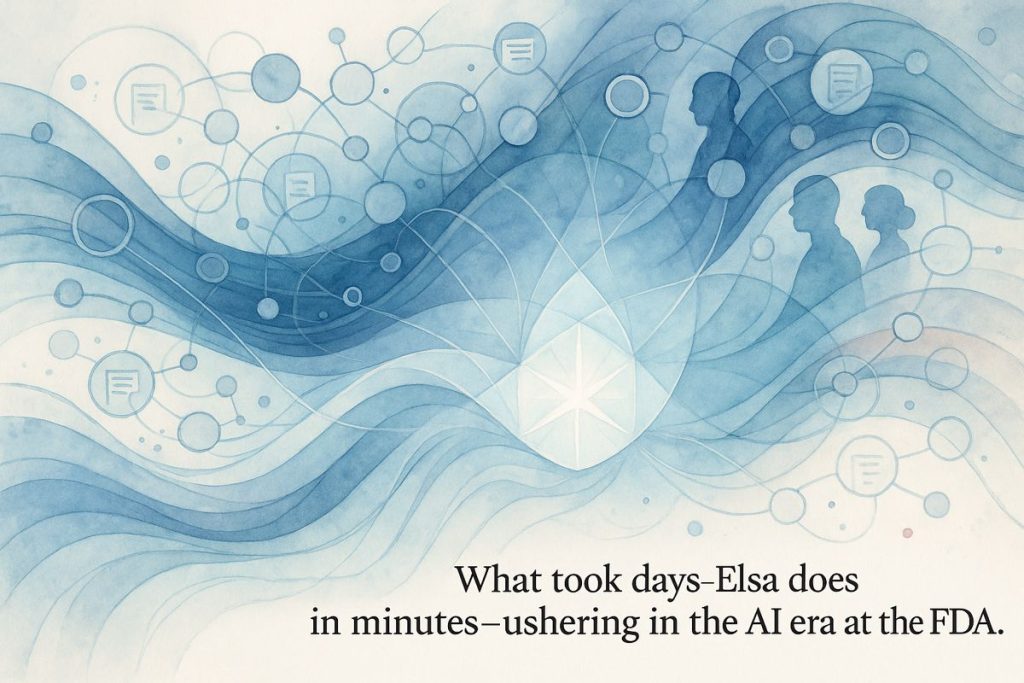Elsa is a special AI tool made by the FDA to help review new drugs much faster and more safely. It reads huge piles of scientific paperwork, finds important details, and quickly points out any trouble spots, turning days of work into just minutes. Elsa keeps all the secret information locked up tight, never letting it leave the FDA. Thanks to Elsa, drug reviews are not only speedier but also more accurate, which means patients can get life-saving treatments sooner. This clever machine is changing the whole way the FDA works, making the future of medicine brighter and faster.
What is Elsa and how is it changing the FDA’s drug review process?
Elsa is an in-house AI tool developed by the FDA to streamline drug review processes. It rapidly analyzes vast regulatory documents, summarizes clinical trial and adverse event data, flags high-risk sites, and enhances security—all while reducing review times from days to minutes and safeguarding confidential information.
The Bureaucratic Avalanche: Why the FDA Needed Elsa
Every year, the U.S. Food and Drug Administration—yes, the same folks who decide if your new allergy pill can go on shelves—wades through enough paperwork to make a forest weep. Picture this: spreadsheets so dense they could serve as a doorstop, reports thicker than the Sunday New York Times, and clinical trial data measured in terabytes, not pages. Reviewing this palimpsest of documentation is a Sisyphean task. A new drug application? That can take 6 to 10 months. Sometimes longer, if you count the coffee breaks. (You should.)
But why now? The answer sits at the intersection of hyperspectral data from gene therapies and the Zeitgeist of generative AI. As the industry pivots to cell therapies, multinational trials, and other scientific frontiers, the FDA’s old methods were beginning to creak audibly. I once tried to parse a regulatory submission with five nested spreadsheets—my patience wore thinner than hospital coffee. Elsa wasn’t just a moonshot; it was a life raft.
Elsa’s Inner Workings: Not Your Average Robo-Reviewer
Let’s clear up a misconception: Elsa is not some off-the-shelf chatbot masquerading as a scientist. Instead, think of her as a diligent, slightly quirky clerk with a photographic memory and a secure desk at AWS GovCloud. She was trained entirely within the FDA’s digital walls, so none of your proprietary data wanders off to Silicon Valley. (You can almost smell the sterile, ozone-laced server rooms.)
Elsa’s talents are many. She can distill a haystack of adverse event reports into a tidy, comprehensible summary—like a sommelier who picks out the faintest notes of blackcurrant in a complex Bordeaux. She crosschecks product labels, generating SQL code for nonclinical databases with the flick of a virtual wrist. Her pièce de résistance? Reviewing clinical trial protocols at warp speed. According to one reviewer, what once took two or three days now takes six minutes. Six! That’s barely enough time to stir a cup of maté.
Elsa even has a nose for trouble—she can flag high-priority sites for inspection by sifting through historical and current data, much like Sherlock Holmes with a hyperspectral magnifying glass. Is she infallible? Hardly. I initially doubted she could handle the linguistic contortions of regulatory jargon (who wouldn’t?), but after seeing her tackle a 1,200-page submission without breaking a sweat, I ate my words. Slightly bitter, like over-roasted espresso… but humbling all the same.
Security, Trust, and the Specter of AI
Naturally, security is the polestar here. Elsa never lets industry data slip beyond the FDA’s moat—no chance your secret sauce is training some shadowy third-party AI. This isn’t just a marketing boast; it’s enshrined in the FDA’s January 2025 draft guidance, which sets a risk-based framework for all AI use (see here). I had to stop and ask myself: How often do regulators outpace Silicon Valley in privacy by design? Not often, but here’s the proof.
Building Elsa in-house also nips a real problem in the bud: staff turning to ChatGPT or Gemini for sensitive work. (Shudder.) Many a well-meaning reviewer has wandered down that path, only to realize—too late—the perils of consumer-grade platforms. I’ll admit, I once pasted a redacted protocol into a public tool for a quick summary. Ugh. Never again.
It’s no wonder that Commissioner Dr. Marty Makary made Elsa’s launch a cross-disciplinary effort, pulling in expertise from pharmacovigilance to database engineering. The result? An AI platform that’s as tightly bolted as the vault at Fort Knox, but nimble enough to help both reviewers and innovators.
The Ripple Effect: Industry, Patients, and Tomorrow’s FDA
The industry’s response? Enthusiasm tinged with a hint of envy. Pharmaceutical companies, from Bristol Myers Squibb to Moderna, have already tried to automate regulatory grunt work themselves—mostly with mixed results and a trail of half-baked Python scripts. Elsa, though, signals a new epoch: reviews that are not only faster but also more transparent and consistent.
Consider the implications. If a new oncology drug clears the review queue months sooner, patients with relapsed lymphoma might receive next-generation treatments before their window closes. That’s not hyperbole; it’s hope, measured in weeks saved and lives extended.
Jeremy Walsh, the FDA’s inaugural Chief AI Officer, isn’t shy about calling this “the dawn of the AI era at the FDA.” Elsa is just
